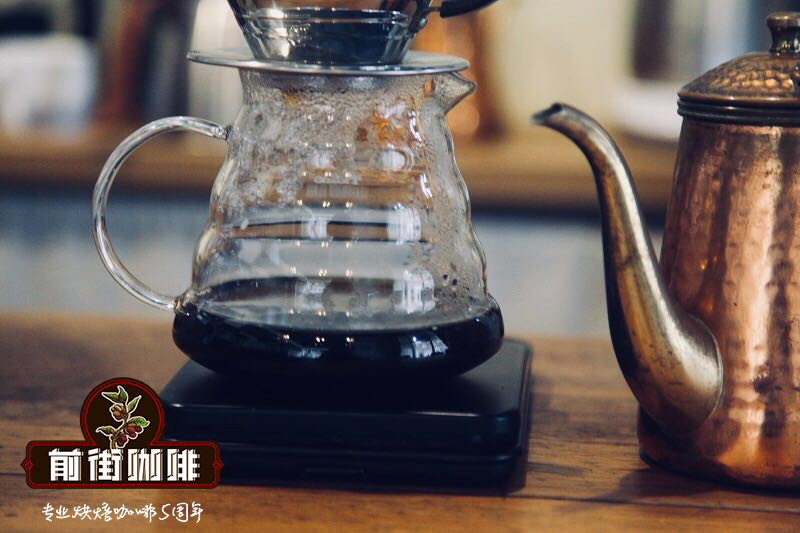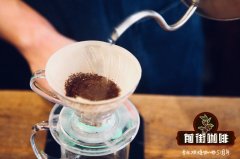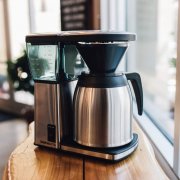The Origin of drip Coffee and hand-brewed Coffee how to drink drip Coffee and how to make it good

Professional coffee knowledge exchange More coffee bean information Please pay attention to coffee workshop (Weixin Official Accounts cafe_style)
Why coarse ground coffee powder is suitable for drip filtration-coffee powder common grinding thickness diagram
in the past few years
Hand brewed coffee is especially popular in China, also known as drip coffee--
In order to make it clear in the title
They call themselves...
Please use "hand flush" or "filter cup" or "drip filter" to call it later…
IMAG2064_s.jpg
For simplicity's sake, let's not confuse ourselves.
It's called "hand rush" after_
(Actually, I'm too lazy to type so many words...)
Hand to hand, simple.
which is basically putting coffee powder in filter paper.
Slowly infuse with hot water
and use gravity to separate coffee from ground coffee--
is very simple
It's actually pretty easy to do.
Just how to do it well, then there is a lot more knowledge--
What equipment is needed?
1. filter bowl
2. filter paper
3. Hand flushing kettle
4. transparent glass jug
Filter cup
There are different types and materials of filter cups on the market
In the past, it was a three-hole filter cup with three holes in the bottom.
Around the time of the rise of fine coffee, this three-hole filter cup was representative of the filter cup.
Even the filter cup in the American coffee machine is the same shape--
Then came the single-hole conical filter cup and the round, flat-bottomed filter cup.
In recent years, conical filter pots with smaller tapers have appeared_
in terms of materials
Everything from plastic ceramics to metal mesh can be found.
A while ago, I also found filter cups and ceramic equipment filtered inside--
It was really interesting!
IMAG0499_s
Filter paper
Said it was filter paper.
But the material is not limited to paper
And flannel mesh.
Different filter materials will also affect the taste of coffee
Filter paper is clean and flannel is full
Metal mesh tends to have fine powder, so the taste is relatively rough
But it's also possible to say that the situation closest to the cup test
* Hand made pot
In the past, in order to control the flow of water
will be brewed especially in a kettle with a very slender spout.
This is what we call a needle spout.
The material is mainly divided into stainless steel and copper pots
Its external shape also has different designs for different brewing techniques
However, in recent years, Japanese enamel hand-made pots have become popular.
Features are specially designed spout for better control of water flow and material to maintain water temperature
(Old Duck went to Tokyo Ginza this year-Amber also uses this enamel hand-made pot)
Transparent glass pot
This glass pot is mainly placed under the filter cup to receive
You might ask: I'll just put the glass under-
That's what I used to think, and then I used to make coffee until it was full...
So clear glass is important--
It would be better if there were capacity scales--
The principle of selection is: it can support the filter cup firmly--
Not too big, not too small.
And the key is "heat resistance."
DSCF3482_s.jpg
Here's how to make a cup of coffee-
1. Fold the pressed edge of the filter paper and place it in the filter cup, and place the filter cup on the glass jar
2. Pour some hot water on the filter paper first, so that the filter paper is wet and attached to the filter cup
3. Pour coffee powder into filter paper and let it average
4. Pour out the hot water filtered in step 2
5. Prick a knuckle deep hole in the middle of the powder with your finger
6. Slowly pour hot water at about 88--92 degrees Celsius from the hole, circulating from inside to outside, and the amount of water must only make all the powder completely wet.
7. Allow to stand for 20 to 30 seconds (called "steaming")
8. Continue to pour hot water slowly, from inside to outside, and then from outside to inside, so that the water level is maintained at a fixed height
9. When sufficient coffee has been extracted, remove the filter cup immediately without waiting for the coffee in the filter cup to filter out.
10. Pour coffee into your favorite cup and enjoy it.
And there's a video demonstration on YouTube--
For your information--
The above method is a method of "continuous water"
Which means, except for the steam,
without stopping at all--
There is "continuous water" and naturally there is also a method of "breaking water"
Same except for step 8 above
The method of "breaking water" is roughly as follows
Twice around-> water cut-> three times around-> water cut-> three times around
After this process is completed, the extraction amount is almost satisfied, and the extraction can be stopped--
And every time the water is cut off, wait until the water is almost filtered out before starting to pour water.
Therefore, the powder thickness of the general "water cut method" will be slightly thicker_
What is the difference between "water cut method" and "continuous water method"?
Why do I always taste different from the ones the shop owners make?
How fine is the powder? How much water should I take? What's the temperature of the water?
Why steam?
We'll explain these questions in the advanced section--
Is it okay to drizzle Italian beans? What is the difference between American coffee and Italian coffee beans?
Important Notice :
前街咖啡 FrontStreet Coffee has moved to new addredd:
FrontStreet Coffee Address: 315,Donghua East Road,GuangZhou
Tel:020 38364473
- Prev

No matter how much Starbucks drip filter coffee is drunk, it is not as good as self-brewing and drinking with drip filter coffee machine.
Professional coffee knowledge exchange more coffee bean information please pay attention to the coffee workshop (Wechat official account cafe_style) why the coarse ground coffee powder is suitable for trickling type-coffee powder common grinding detail diagram coffee brewing pot is quite different, different utensils have different functions and design ideas, such as simple, convenient and easy to operate filter pot; American trickle coffee machine is the most
- Next

How to use the American filter coffee machine? which kind of Starbucks filter paper does the coffee machine use? how much is the coffee?
Professional coffee knowledge exchange more coffee bean information please pay attention to the coffee workshop (Wechat official account cafe_style) why the coarse ground coffee powder is suitable for drip filter coffee powder common ground coffee has been related to the culture of life in recent years, that is, the so-called Wenqing style, although coffee was originally used as a spiritual tonic for the busy and busy life of urbanites, or
Related
- Beginners will see the "Coffee pull flower" guide!
- What is the difference between ice blog purified milk and ordinary milk coffee?
- Why is the Philippines the largest producer of crops in Liberia?
- For coffee extraction, should the fine powder be retained?
- How does extracted espresso fill pressed powder? How much strength does it take to press the powder?
- How to make jasmine cold extract coffee? Is the jasmine + latte good?
- Will this little toy really make the coffee taste better? How does Lily Drip affect coffee extraction?
- Will the action of slapping the filter cup also affect coffee extraction?
- What's the difference between powder-to-water ratio and powder-to-liquid ratio?
- What is the Ethiopian local species? What does it have to do with Heirloom native species?

